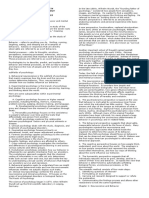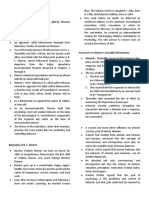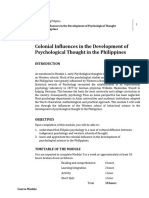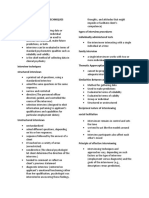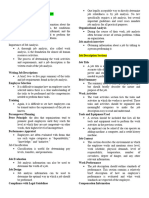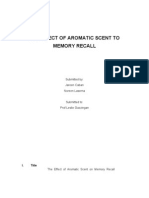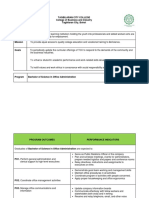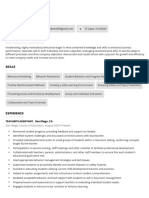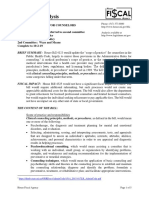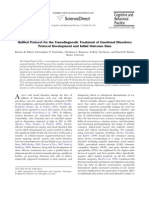0% found this document useful (0 votes)
403 views7 pagesChapter 10: Between Subjects - Factorial Designs: More Than One Independent Variable
A factorial design studies the effects of two or more independent variables on a dependent variable simultaneously. It allows researchers to examine main effects of each independent variable as well as interactions between variables. For example, a 2x3 design would have two independent variables, each with three levels, resulting in 2*3=6 treatment conditions. Factorial designs provide more information than conducting separate experiments, but results can become complex with more variables or higher-order interactions. Keeping between-subjects designs simple helps address limitations of subject numbers, time, and interpretability.
Uploaded by
Johnreih BanggaCopyright
© © All Rights Reserved
We take content rights seriously. If you suspect this is your content, claim it here.
Available Formats
Download as DOCX, PDF, TXT or read online on Scribd
0% found this document useful (0 votes)
403 views7 pagesChapter 10: Between Subjects - Factorial Designs: More Than One Independent Variable
A factorial design studies the effects of two or more independent variables on a dependent variable simultaneously. It allows researchers to examine main effects of each independent variable as well as interactions between variables. For example, a 2x3 design would have two independent variables, each with three levels, resulting in 2*3=6 treatment conditions. Factorial designs provide more information than conducting separate experiments, but results can become complex with more variables or higher-order interactions. Keeping between-subjects designs simple helps address limitations of subject numbers, time, and interpretability.
Uploaded by
Johnreih BanggaCopyright
© © All Rights Reserved
We take content rights seriously. If you suspect this is your content, claim it here.
Available Formats
Download as DOCX, PDF, TXT or read online on Scribd
/ 7






























